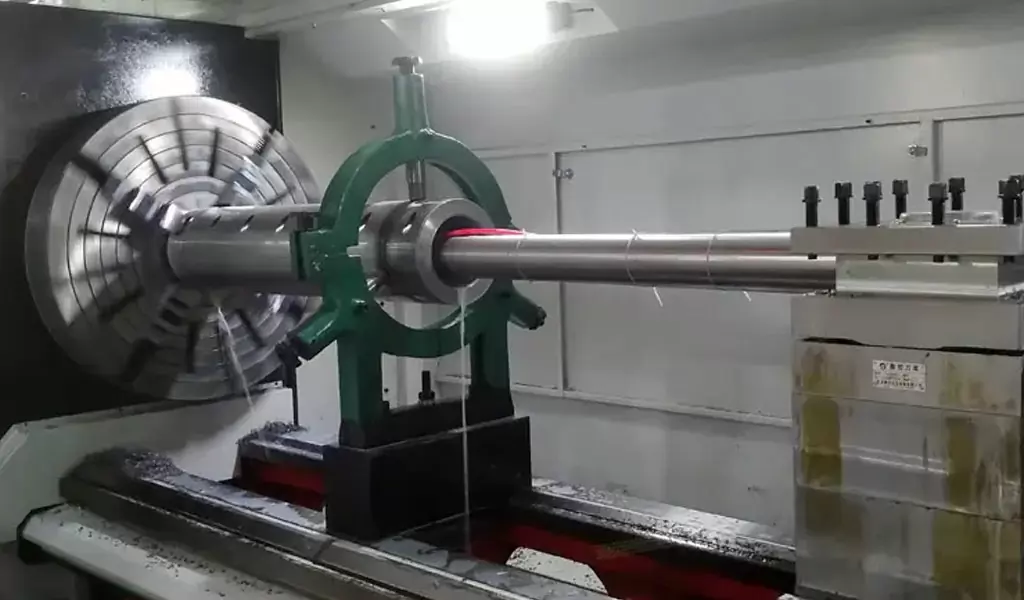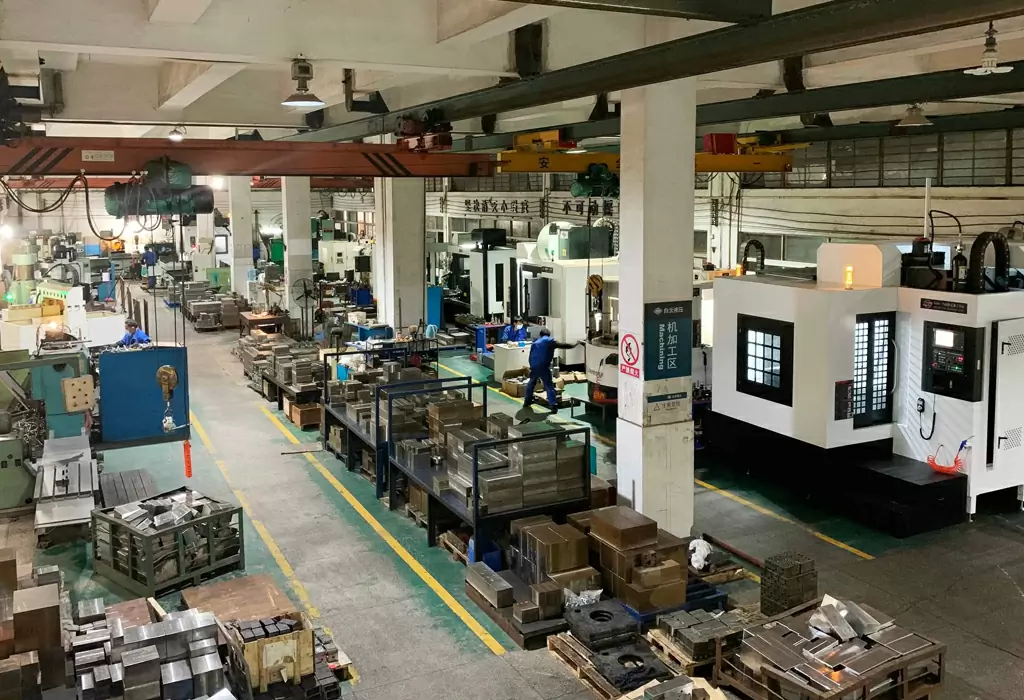
The turning temperature of stainless steel materials is high, and serious hardening occurs during cnc machining. There are still carbides in the steel, and there are no hard inclusions, so that the tool forms a cold weld, so the tool wears faster and its durability. Low. Therefore, it is necessary to make a reasonable selection of tools, and the turning amount and turning fluid can effectively solve the phenomenon of poor turning performance of austenitic stainless steel, so that the processed parts meet various requirements.
The Turning Characteristics Of Stainless Steel
The performance of stainless steel materials in turning is poor. When actually turning them, there are mainly the following problems:
The Problems With Its Work Hardening
The occurrence of work hardening is mainly manifested in the following three aspects:
The first is because the stainless steel material has a large plasticity and undergoes strong deformation. When the deformation occurs, the lattice produces a large strengthening coefficient.
The second is the turning problem. When turning, because of the stability of austenite, it becomes martensite, and the hardness of martensite is too large:
The third is that when it is cut, it is hardened by the influence of temperature. This work hardening phenomenon has an impact on the work of subsequent processes.
Has A Relatively Large Turning Force
Because of the large plasticity and serious deformation when cnc turning stainless steel materials, work hardening is very likely to occur during the turning process, and a large turning force will be generated, so it is necessary to make a reasonable choice of turning tools.
3 High Turning Temperature
Because stainless steel has strong plasticity, it deforms, and the friction between the workpiece and the tool will increase, and the turning heat will continue to increase. When the temperature is too high, the problem of work hardening will occur.
4 Chips Are Easy To Stick.
Because stainless steel has strong toughness, after turning it, its chips will not be cut off. These chips will form a kind of extrusion between the workpiece and the tool, which will be produced on the machined surface, which will affect the quality of the turning surface. In order to avoid adverse effects, when the adhesion is serious, built-up edge can be generated, which will increase the wear of the tool, which will cause greater wear on the machined surface.
The hardness of the material is changed by the heat treatment method. Stainless steel will have different hardness after heat treatment, which has a greater impact on the turning process. We can use YW2 material turning tool to deal with 3Cr13M with different hardness after turning heat treatment, and explain the different conditions of the material workpiece. Because annealed martensitic stainless steel has the characteristics of low hardness and poor turning performance, but due to the influence of material plasticity and toughness, there will be uneven structure, strong adhesion and fusion, which will occur during turning. It is difficult to obtain a better surface quality for the knife tumor. After the quenching and tempering treatment, the 3Cr13Mo material whose hardness is kept below 30HRC has the characteristics of good machinability and can achieve better surface quality
The Selection Of Tool Material

The turning performance of the tool material is closely related to the durability and productivity of the tool. The craftsmanship of the tool material has a great impact on the manufacturing and sharpening quality of the tool itself.
When there is a tool to cut certain materials, the principle of selection is mainly based on its wear resistance, and when a higher temperature is generated, its turning performance should be guaranteed. Our most common materials include: High Speed Steel and Carbide.
Because high-speed steel can generally achieve its turning performance below 600C, when stainless steel is cut, it will generate a higher temperature, which is generally greater than 60090. When the heat resistance and wear resistance of cemented carbide high-speed steel When the resistance is too large, it is more reasonable to choose cemented carbide materials to make tools, which are suitable for the turning of stainless steel.
The Measures To Improve The Current Situation Of Turning Of Stainless Steel Materials
In order to change the production status of stainless steel parts, we must first improve the cnc machining capacity of stainless steel. Combined with the production experience of our factory in the stainless steel parts industry for many years, the following measures are proposed.
Various types of stainless steel can be used for the production of castings. The more common process is to cast sand molds. The casting of shell molds can produce high precision stainless steel castings and produce relatively smooth surfaces. The most ideal process It is the casting of centrifugal investment. The process of this process is generally: mold making – wax injection. + combination of wax parts – dipping work – sanding work – dewaxing work – preheating work – – casting work – shell removal work – – turning I work -+ Grinding gate, heat treatment, etc.
The Measures To Improve The Turning Process Of Stainless Steel
The Selection Of Blade Material
We can choose cemented carbide of different grades such as 813, YHl, etc., which will achieve better results. For example: when using 813 to cut I Cr18Ni9Ti, its machining efficiency and tool life are 2-3 times higher than that of cemented carbide. However, the manoeuvring time of finishing turning – one pass is relatively long, so you can choose the composite cubic boron nitride turning tool with strong anti-wear and anti-heat adhesion ability. Process it through YG8 and accumulate successful experience in stainless steel. The YG8 has good thermal conductivity, it has strong adaptability, but the front and rear angles should not be too large.
The Turning Angle Of The Tool
In the practice of test and field production, when stainless steel cnc turning, 50-80 can be selected for the clearance angle of the turning tool, and a larger value can be selected for free-turning stainless steel. When turning lCr18Ni9Ti stainless steel, its main declination angle decreased from 750 to 300, and the turning tool time also increased from 15min to 35min. The work hardening shows a strong trend. During the turning process, a large radial component force is generated, and vibration occurs, and the vibration increases the work hardening trend, and the turning conditions are continuously deteriorated. Therefore, we cannot Choose a smaller entering angle. Especially when turning slender shaft workpieces, a relatively small entering angle cannot be selected. In field production, the 750 and 600 are used for turning stainless steel ODs, while the free-turning stainless steel option can be used with a 900 entering cutter. In order to enhance the strength of the turning edge, the inclination angle of the blade is mainly about -80–30: to increase the strength of the turning edge, the turning edge should become a full angle. Its chip flutes mainly use full arc flutes. In order to control the turning flow direction, the bevel angle of the chip flute should be up to 150 degrees, so that the flute is wide at the front and narrow at the back. This chip curl is prone to breakage when it encounters the surface to be machined. The chip flute of the tool deepens, and the opposite happens in roughing. (
Turning Amount
In order to improve production efficiency and prolong the service life of the tool, after the turning amount is specified, – – must use the best combination to carry out the turning amount. In production, the main method for selecting the turning amount is: first, select the largest possible amount of back turning, and then restrict it according to the power, stiffness, tool strength and roughness of the machined surface of the machine tool. The feed amount is selected, and the appropriate turning speed is determined. When cnc machining stainless steel, the turning speed should not be too high, generally 35-60/min is better. In order to reduce wear and tear, it is not suitable to select too small feed rate, mainly 0.2-0.75mm/r is mainly used. When finishing, when the amount of back turning is less than 0.5m: roughing should be between 4-6mm. Mainly choose medium speed and large depth of cut for roughing and semi-finishing.
The Role Of Cooling Lubricants
When turning stainless steel materials, there will be a lot of heat generation, which will cause the tool to be heated and worn. When the size of the workpiece is changed, the surface quality is reduced, and the productivity is limited. In order to reduce the heat, a special liquid can be selected for filling, that is, cooling lubricant.
- Lower the temperature. Since the cooling lubricating fluid can absorb a large amount of heat, the error caused by the temperature change of the workpiece is reduced.
- The surface quality is improved and the tool wear is reduced. If the molecules of the cooling lubricant will adhere to the surface of the metal when it encounters it, a very thin film will be formed on the surface, and the friction between the tool, the chip and the workpiece will also be reduced. In addition, the cooling lubricant sometimes flushes the chips away, causing damage to the workpiece surface while the chips are being cut.
- Turning is more labor-saving. Since the cooling lubricating fluid may drill into the metal gap, when turning, when the tool cuts the metal, a large crack will be generated, and the chip will be separated from the body. In summary, it is necessary to make a reasonable choice for the tool, master the turning amount, and select the appropriate turning fluid, which can solve the phenomenon of poor turning performance of austenitic stainless steel. certain requirements and produce relatively satisfactory results.